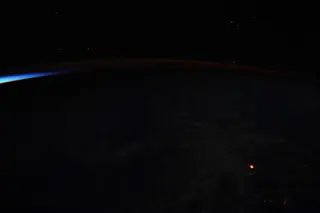The Leilani Estates eruption (bottom right) seen by Astronaut Ricky Arnold aboard the ISS on June 20, 2018. NASA. The eruption that started in Leilani Estates on the lower East Rift Zone of Kīlauea is rapidly approaching the end of its second month, and right now, there are no signs the eruption will be ending soon. For many of us, this eruption seems unprecedented: How often do volcanoes erupt lava like this for months at a time? It turns out that it isn't that uncommon, although in terms of the recent history of Kīlauea, this is a big event for the Hawaiian shield volcano.
The silvery lava flow from fissure 8 snaking towards the ocean. The glassy nature of the recent flows give the freshest lava that color. Compare it to the thermal image (below). Planet, used by permission. So, just how big? I've talked a bit about the scale ...














